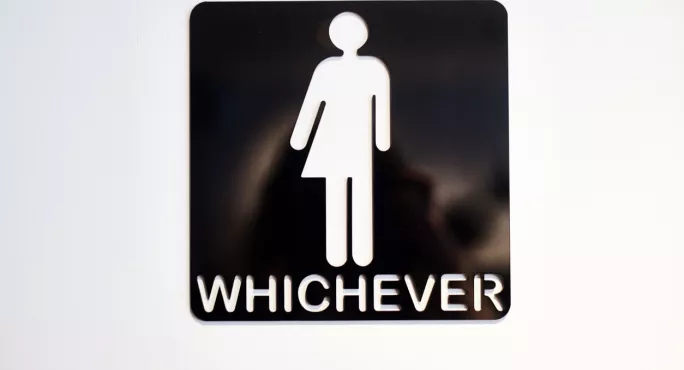- Home
- Mixed-gender toilets have ‘negative impact on girls’
Mixed-gender toilets have ‘negative impact on girls’

A mother has hit out at the introduction of mixed-gender school toilets, saying the move is “detrimental” to girls who are at higher risk of sexual assault in mixed facilities.
She added that the girls at her daughter’s school felt embarrassed sharing the spaces with boys and were now largely choosing not to use the mixed toilets.
However, this meant them using single-sex facilities in a less convenient location and therefore missing out on bigger chunks of lessons if they had to go to the toilet during class, she said.
School toilets: ‘Never forget their importance’
Quick read: Lack of staff-only school toilets branded ‘insanity’
Budget cuts: School toilets ‘not cleaned regularly’ anymore
The change in provision took place at an Aberdeenshire school over the summer holidays and involved 18 single-sex toilets over three floors - nine girls’ toilets and nine boys’ toilets - being converted into mixed-gender ones.
The council told Tes Scotland that creating shared toilet spaces when upgrading or installing new facilities was “part of a national move to promote inclusion”. A spokeswoman added that the school consulted both the parent and pupil council about the move and had received no official complaints from pupils to date.
However, the mother - who did not wish to be named - argued that the parent and pupil council included just “a handful of people” and that the wider school community should have been consulted. She pointed out that when the school was considering a change in its uniform all parents and pupils were able to vote and designs were shared.
She said: “Major changes to school toilets, affecting half the pupils: no consultation, no information has gone home to parents to date, nothing. It smacks of a fait accompli, with it being much harder to protest the change after it has happened.”
The council also said that mixed toilets resulted in a reduction in graffiti and “general ill-use of toilet areas”. However, the parent questioned why girls should lose their private spaces because “boys cannot look after theirs”.
She said female pupils were complaining of “boys peeing all over the seats” and floor in the new facilities and there had already been graffiti aimed at a female pupil.
“How does this reduce bullying, when girls are going to encounter bad graffiti?” she asked. “It makes many girls feel less comfortable at school.”
She added: “Where is the research that backs this up? Who is the driving force pushing for mixed-sex toilets? Where are the impact assessments on different groups within the school, for example, pupils of other faiths, ASN (additional support needs) pupils, pupils with anxiety issues etc. All could be negatively impacted by this change.
“My daughter and her friends are choosing to not use these toilets. They go to the remaining single-sex toilets. Many other girls are doing the same. This change has effectively reduced the number of girls’ toilets available in school. The message this sends is that girls’ needs don’t matter, that their views don’t matter, and that research showing that mixed-sex toilets carry an increased risk of assault is disregarded.”
A spokeswoman for Aberdeenshire Council said: “Creating shared toilet spaces when we’re upgrading or installing new facilities is part of a national move to promote inclusion.
“The design of these spaces is much more open plan, meaning that there’s no door into handwashing areas, but the cubicles themselves offer much more privacy by being enclosed from floor to ceiling. Sanitary bins are provided in all of these toilets in secondary schools.”
The spokeswoman added: “We’re finding locally this has resulted in a number of benefits which include less graffiti and less general ill-use of toilet areas, as well as helping everyone to feel accepted. In the many schools which now benefit from shared toilet spaces it has just become the familiar norm, and we’re even hearing from schools where they have a mixture of both that they’d prefer if all toilets were set up in the shared, open plan way.
“Anyone with concerns should discuss these with their headteacher in the first instance.”
She said the changes at the school “were discussed with both the pupil and parent councils, and we are not aware of any complaints from the pupils to date”.
Keep reading for just £1 per month
You've reached your limit of free articles this month. Subscribe for £1 per month for three months and get:
- Unlimited access to all Tes magazine content
- Exclusive subscriber-only stories
- Award-winning email newsletters



